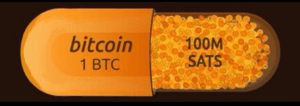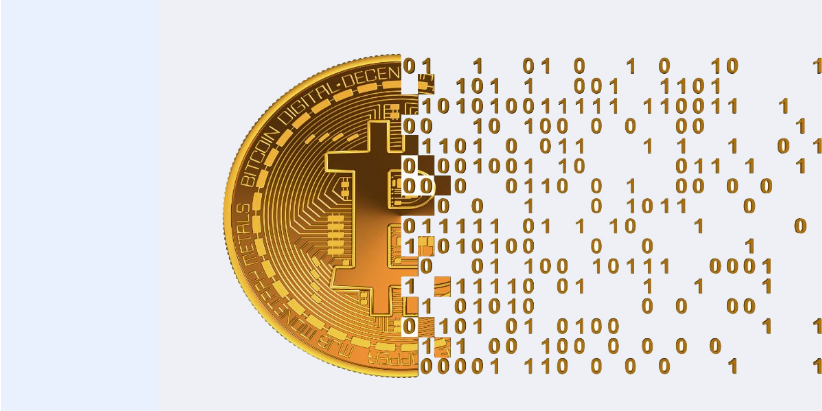When it comes to Bitcoin, many newcomers are often put off by the idea that they need to own a whole coin to participate. This misconception is not only common but also understandable, given the hype surrounding Bitcoin’s limited supply of 21 million coins. Such scarcity creates an aura of exclusivity that can feel intimidating. However, the reality is far more welcoming and inclusive than it seems. In this post, we’ll explore why you don’t need to own an entire Bitcoin, how Bitcoin’s value is set to increase, and the significance of its deflationary nature.
The Beauty of Satoshis
First, let’s break down the idea of ownership in the Bitcoin world. Just as a dollar can be divided into cents, Bitcoin can be divided into smaller units known as satoshis. Each Bitcoin comprises 100 million satoshis, meaning you can invest in Bitcoin without needing to purchase a whole coin. This divisibility makes Bitcoin accessible to everyone, allowing you to enter the market with whatever amount you’re comfortable with. You don’t have to break the bank to be a part of the Bitcoin revolution; even a small investment can yield significant returns in the long run.
For instance, if Bitcoin is currently priced at $100,000, you could invest just $1000 and own 0.01 BTC, which is equivalent to 1,000,000 satoshis. This approach enables you to invest at your own pace and comfort level, allowing for both gradual entry into the market and risk management. The important thing to remember is that your investment is still a stake in Bitcoin’s future growth, no matter how small. As Bitcoin continues to appreciate, even fractional ownership can turn into meaningful value.
This fractional ownership model resonates with a diverse range of investors—from casual savers to more serious traders. It democratizes access to Bitcoin, allowing people from all walks of life to participate in a financial ecosystem that was once reserved for a select few. Whether you’re looking to dabble in cryptocurrency or establish a more substantial portfolio, investing in satoshis opens up opportunities that were previously unimaginable. In essence, you can start small and grow your investment as you learn and gain confidence in the crypto space.
As we advance, Bitcoin’s price movements will only fuel the interest in buying fractions of a Bitcoin. When people realize that owning a piece of the pie is more achievable than they thought, we’ll see an influx of new investors looking to secure their stake. This shift could lead to a stronger and more diverse Bitcoin community, driving demand and ultimately enhancing the value of Bitcoin as a whole.

Bitcoin’s Deflationary Nature
Now, let’s discuss why Bitcoin’s deflationary nature plays a critical role in its long-term value proposition. Unlike fiat currencies, which can be printed at will, Bitcoin’s supply is capped at 21 million coins. This limitation means that as demand for Bitcoin increases—whether from retail investors, institutions, or governments—the value of each individual unit—whether a whole Bitcoin or a fraction of it—will likely rise. This deflationary characteristic is a key feature that differentiates Bitcoin from traditional currencies, which are subject to inflationary pressures due to excessive money printing.
When you think about it, Bitcoin operates more like a scarce resource, similar to gold, rather than a currency that can be infinitely produced. This scarcity drives intrinsic value, as people inherently desire what is rare. As the world grapples with economic uncertainties and inflation rates soar, many investors are turning to Bitcoin as a hedge against fiat currency devaluation. The logic is straightforward: if the supply of Bitcoin is fixed, and more people want to own it, the price must inevitably increase.
In practical terms, this means that as Bitcoin becomes more widely accepted and integrated into the global economy, the purchasing power of even a single satoshi is expected to increase dramatically. Imagine this: today, 1 satoshi might buy you a cup of coffee, but in a world where Bitcoin is widely adopted, that same satoshi could buy you a car or even more. This deflationary aspect is not just theoretical; it has real implications for your investments and savings in Bitcoin. As Bitcoin gains acceptance and its utility grows, the demand for it will likely surge, thus enhancing its value.
Consider the implications of Bitcoin’s deflationary nature for long-term investors. Owning even a small amount of Bitcoin can potentially yield substantial returns as the purchasing power of satoshis appreciates. It’s not just about the price of Bitcoin today; it’s about where it will be in the future as more people recognize its value and utility. This understanding should encourage you to think long-term and appreciate the strategic advantage of holding onto your satoshis rather than dismissing them as insignificant.
The Path to Bitcoinization
As we look forward to the future, the concept of “Bitcoinization” becomes increasingly relevant. This term refers to the gradual integration of Bitcoin into the global economy, where it becomes a standard form of money alongside or even replaces traditional fiat currencies. The momentum behind Bitcoinization is building, and it’s not just a fleeting trend; it’s a fundamental shift in how we perceive and use money.
As more individuals, businesses, and even governments adopt Bitcoin, its scarcity will drive demand, pushing its price upward. We’re already witnessing this trend, with companies like Tesla, MicroStrategy, and Square making headlines for adding Bitcoin to their balance sheets. Payment systems are evolving to accept Bitcoin as a legitimate currency, making it easier than ever for consumers to transact in Bitcoin. This integration is vital for Bitcoin’s future, as it lays the groundwork for broader acceptance and use.
Imagine a world where Bitcoin is not just an investment asset but a commonly accepted medium of exchange. A world where you can buy groceries, pay for services, and even settle bills with Bitcoin. This vision isn’t far-fetched; it’s becoming more feasible every day as technological advancements improve transaction speeds and reduce costs. As Bitcoin continues to gain traction, the value of Bitcoin, both in whole coins and satoshis, will likely experience significant appreciation.
In this evolving landscape, it’s essential to keep an eye on Bitcoin’s trajectory. As the narrative around Bitcoin shifts from being seen as a speculative investment to a legitimate currency, its value will undoubtedly rise. Those who recognize this potential and invest accordingly—whether they buy whole Bitcoins or fractions—will be well-positioned to benefit from the coming wave of Bitcoinization.
Conclusion
You don’t need to own an entire Bitcoin to be a part of this revolutionary financial ecosystem. The divisibility of Bitcoin allows anyone to invest, and the increasing value of satoshis in a Bitcoinized world makes it a compelling opportunity. As we embrace this new era of money, remember that even a small stake in Bitcoin can lead to substantial rewards.
So, whether you’re buying 0.001 BTC or a whole Bitcoin, you’re not just investing in a currency; you’re investing in the future of finance. Don’t let the fear of needing to own an entire coin hold you back.

